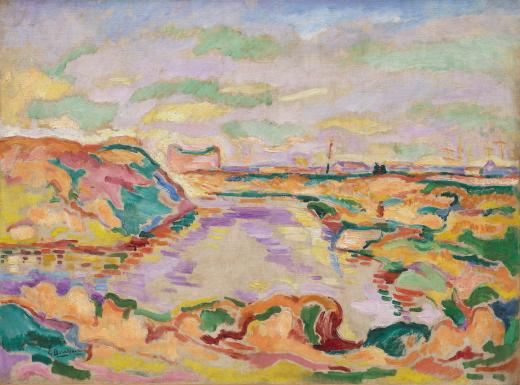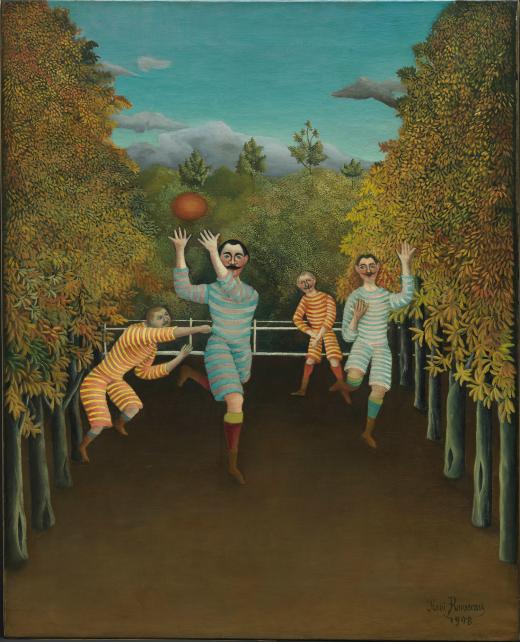POST-IMPRESSIONISM AND EARLY MODERNISM
The Thannhauser Collection’s selection of European art of the fin de siècle—a complex period defined by economic, political, social, and psychological turmoil, often in the name of progress—captures the diversity of styles that emerged in reaction to the era’s two dominant artistic strains: academic naturalism and Impressionism, which both promoted adherence to the physical world.
Artists such as Paul Gauguin and Vincent van Gogh—subjects of critical exhibitions organized at the Thannhausers’ gallery in Munich—turned their eye inward. Rather than produce art that was a “window to the world,” these so-called Post-Impressionists used sinuous lines and nonnaturalistic colors to imbue their paintings with an emotive tenor. Van Gogh, in particular, translated reality through the lens of personal experience and feeling. Painted during Van Gogh’s recovery from an attack of mental distress, Mountains at Saint-Rémy (July 1889) evokes the artist’s subjective state—not to mention the awe inspiring presence of the rock formations near his hospital grounds—through its thick application of paint and animated brushstrokes.
Georges Braque, in his Fauvist painting Landscape near Antwerp (1906), employed vibrant, expressionistic colors and deconstructed the landscape as a sensation of patterned light. Still other varied art forms appeared at the turn of the century, including the flattened, stylized work of the untrained painter Henri Rousseau. Set in an unspecified forest, Rousseau’s The Football Players (1908) is at once a joyful romp and a hauntingly dreamlike scene.


